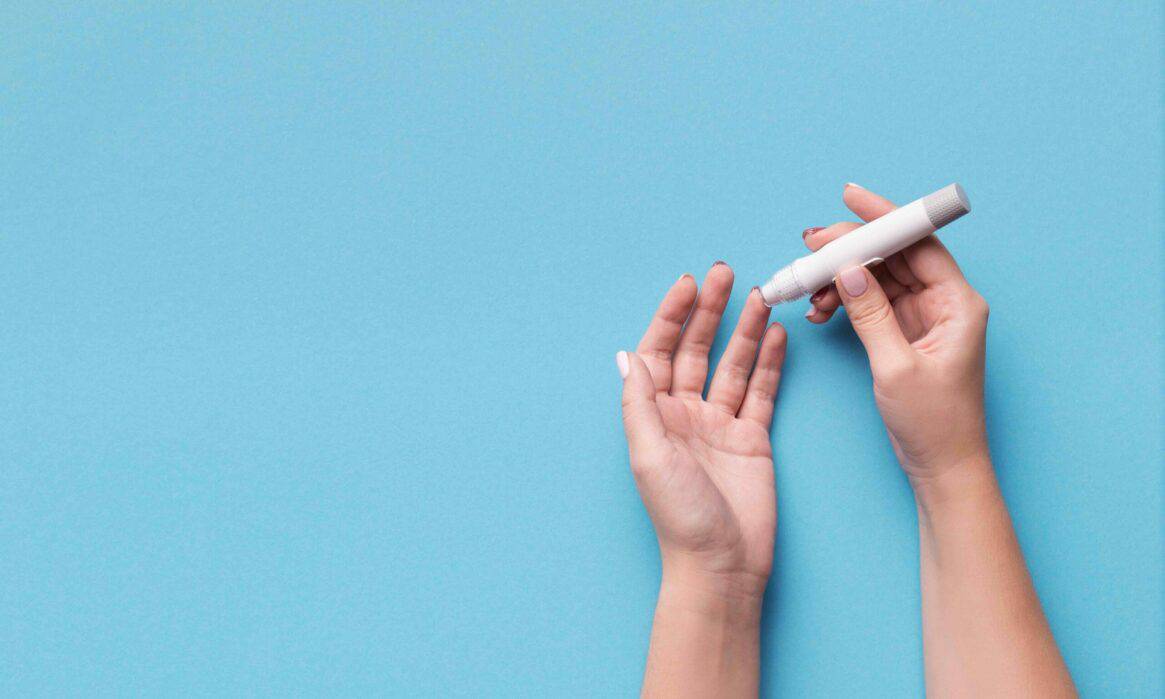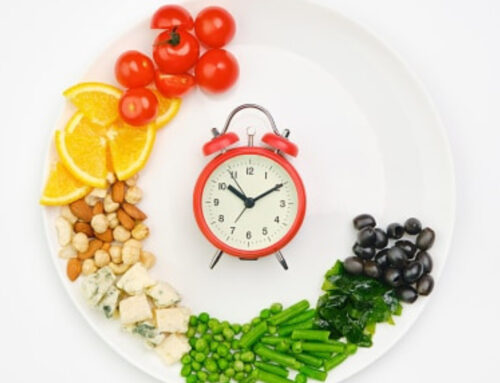Last week I put together a 3 week guide to starting fasting. Part of that process involves testing your blood sugar and ketones during a fast. In fact, I believe that everyone should throw out their scales. Focus on what your blood sugar and ketones are telling you about your body’s reaction to the food you’re eating.
First, you’ll want to get a blood reader. My favorite one is the Keto Mojo. This involves an easy finger prick and is more affordable than other devices.
When to check your blood sugar and ketone levels
- You’ll be taking two sets of readings. The first set of blood sugar and ketone readings will be taken as soon as you wake up and before consuming any food. Then, finish your morning routine, have your cup of coffee, and test these levels again right before consuming your first meal of the day. Write down and keep track of your readings.
-
Your blood sugar should be somewhere between 70-90.
-
Your ketones should be above 0.5.
-
What you want to look for in the second reading is that your blood sugar has gone down and your ketones have gone up.
-
If you’re doing more than a 24 hour fast, you may want to measure three times a day. Morning, noon and night, so that you can start looking for a trend.
-
If you are looking to understand your blood sugar levels and ketone levels during fasting watch this Youtube video.
Beware of the “dawn effect”
- The dawn effect is when you wake up and see that your blood sugar has skyrocketed from the number you read the morning before.
- The reason this happens is because after you eat dinner and go to bed, at some point in the middle of the night your body uses internal mechanisms to dump stored sugar (usually from the liver) that had been stored in your body long before.
- Your body does this in an effort to make sure your brain is getting enough glucose to function normally while you are asleep.
- If you find this to be something happening to you, push your morning measurement back an hour and wait for those numbers to come down.
Troubleshooting: What if you’re still struggling to get into ketosis? Or your blood sugar is still high?
-
The first thing you will want to try is fasting for longer. If your numbers aren’t moving, it may be time to push your body to a new level. Do this through longer fasts. 24 hour, or “one meal a day” fasting, aka OMAD fasting. Through these longer fasts your body is forced to exhaust sugar stores and look for fat to create energy.
-
Look at the foods you are eating! You may be consuming too many carbohydrates. This makes it harder for your body to burn fat. I recommend staying under 50 net carbs when trying to get into ketosis.
-
Lastly, if you still find yourself with high blood sugar levels and low ketones it’s time to look at your toxicity. There are several different reasons we become insulin resistant. The toxins in our air, food, soils, and water block our receptor sites for insulin. If this is you, I recommend doing a 90 Day deep detox to get your receptor sites for insulin back to where they need to be.









I woke up and my blood sugar was 60. My ketones were 5.8. What does this mean? And what can I do cos I didnt feel good (obviously).
I am eating one meal a day and fasting for about 18 to 20 hrs. I keep a healthy wholesome diet
Do you have diabetes?
Helli!! Your link, 90 day Deep detox pops as as “the page you were looking for does not exist” – love your “fast like a girl” audio book – listen and share so many of your videos! Will join the academy soon – I live between Nashville USA ???????? and QLD Australia ???????? … learning so much Also listening to your interviews … you’re amazing, Dr Mindy – thank you … I’ve lost 30 lbs in 8 months!
I am just beginning this journey. I have listened to Menopause Reset TWICE and am devouring Dr. Mindy’s videos. I am using a CGM to try to keep my glucose as level as I can. I noticed my glucose dropping a little below 70 in the middle of the night. Im Keeping my glucose 89 and 131 during my waking hours. Is this typical? I am hoping that I am on the right track!
Karen
in your book Fast like a Girl, on page 146 you say that in Appendix C you have listed the two version of your favorite glucose monitors
But there is no sign of that in Appendix C.
This is my question too! Thanks for asking it.
If you go to Dr. Mindy’s website and search for “favorites” you’ll find it. KetoMojo is the only one currently listed and the one I purchased through Dr. Mindy’s link. I’ve been using it for a few days now. Initial instructions weren’t the greatest, but daily use is easy.
I’ve heard Dr. Mindy mention the Freestyle CGM, but I think CGMs are more advanced and getting into biohacking territory.
The content of Fast Like A Girl is SO GOOD! Seriously, kudos to Dr. Mindy! That said, the editorial oversight was lacking. Lots of typos and unexplained references.
Hi! I’m reading Fast Like a Girl and see on page 146 trust there are blood sugar test recommendations in Appendix C but I can’t find them in that section. Does she share about them somewhere online?
Same question as Cristina , Crystal and Meghan! I only see Keto Mojo as a recommendation on YouTube and on the website. What about CGM recommendations?
I have the same exact question about the CGM and finding it in the book. Has anybody gotten an answer on this?
Which Continuous Ketone Monitoring system do you recommend?
Hello Dr. Mindy,
First thank you so much for all your work in giving us the information on fasting. I have learned so much for you. I am changing up my fasting but today was my non fasting day and I tested tonight and my glucose was 114 and ketones.03. I was wondering what is too high for my know fasting day? Also the best CGM to get?
Thank you for all this content. Male in early 40s with genetic predisposition to diabetes, overweight, and worsening hbp…so metabolic syndrome in the making. Finally achieved light nutritional ketosis after two weeks and -8 lbs and feel great. Varying fasts from 14-23 hrs so far and working up to longer fasts. After being so food addicted I’m amazed that I’m able to fast. Only thing that is annoying me is that I seem to have a really bad dawn effect (125 mg/dl 8 hrs after last meal upon waking. At 14 hrs it’s at 70-80 mg/dl. Trends are asi correct but worried about the early morning numbers. Any advice?
Dear Dr. Mindy: What does a high glucose (172) and high ketones (3.8) mean? I have been following your guidance for several months and today I woke up to these numbers- very unusual given I am 18 hours into fasting. Thank you for everything you do.
Any international folks who can’t have a keto mojo meter where they are at? What do you use to monitor ketones? Looking for something that won’t break the bank, but in her book she mentions to stay away from the breath ketone meter